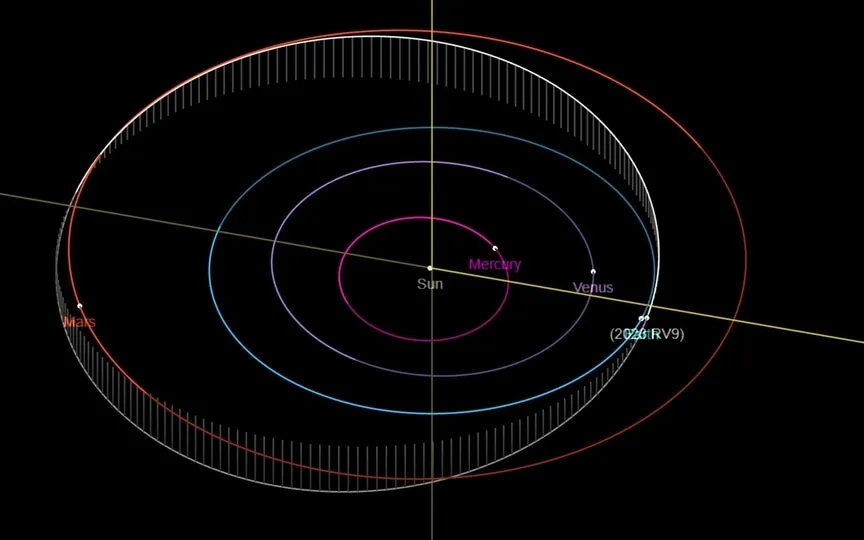Amor Asteroid to Make a Nearby Flyby Today – Learn Its Velocity, Dimensions and More
Today, September 18, an asteroid known as Asteroid 2023 RV9, identified by NASA’s Center for Near Earth Object Studies (CNEOS), will reach its nearest point to Earth. Utilizing their advanced telescopes, NASA is able to detect and monitor asteroids in the sky. Through their observations, NASA has determined that this particular asteroid will approach Earth at a distance of approximately 3.8 million kilometers, hurtling towards us at an astonishing velocity of 25,872 kilometers per hour.
Asteroid 2023 RV9 details
Although this asteroid is traveling at a shockingly fast speed, it is not large enough to cause catastrophic damage to Earth. At 98-223 feet wide, it can be compared to a huge airplane! According to NASA, this space rock belongs to the Amor group of Near-Earth Asteroids, which are near-Earth asteroids with orbits outside Earth but inside Mars, named after the asteroid 1221 Amor discovered by Belgian astronomer E. Delporte. 1932.
Shockingly, this will be the first close-to-Earth approach in history for Asteroid 2023 RV9, although it has passed the planet before, albeit much further back on November 1, 1985. According to NASA’s Small-Body Database Lookup, it’s not in the near future.
Could ISRO launch its own Psyche mission?
NASA is preparing for the launch of Mission Psyche from the Kennedy Space Center in Cape Canaveral, Florida on October 5. An orbiter on a SpaceX Falcon Heavy rocket will travel to an asteroid known as 16 Psyche, which has been made. of gold, nickel and iron. In addition to its gold-rich structure, this asteroid’s outer surface is rich in nickel, resembling the core of an early planet. It is worth almost 10 quadrillion dollars and that is why NASA has planned a mission to this asteroid to study its composition.
So could a similar mission be on the cards for the Indian Space Research Organization (ISRO), which recently made history with its Chandrayaan-3 mission?
According to agency chairman S. Somanath in a conversation with Hindu Business Line, “It needs high-level space robotics, mission management and ground infrastructure expansion, many test missions to return samples, for validation.”




